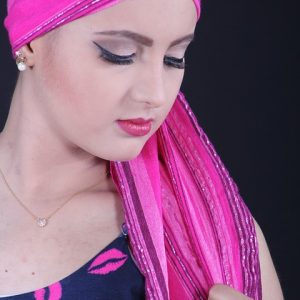
Once diagnosed, alopecia areata treatment decisions will most likely depend in part on the severity of the disease. All treatment options are considered off-label but there are examples with a long history which have been used regularly with some success. For instance, corticosteroids are often used as front line therapy. There are three delivery methods with the optimal choice usually depends on the extent of alopecia.
For Mild Cases
Small patches of hair loss may be treated with either intralesional steroids or topical steroids. Intralesional steroids are injected directly into the problem areas while avoiding eyebrows. Similarly, topical steroids can be a cream or foam applied to the areas of hair loss on the scalp1. It’s possible for topical steroids to cause skin atrophy, which is the thinning of the upper layer of skin, causing a person to become more susceptible to tears. Intralesional steroids may lead to scalp folliculitis2, which is the appearance of small itchy blisters in the area of injection.
For Severe Cases
If topical or intralesional steroids are not doing the job, the next step is to move to systemic steroids3–6. Systemic steroids are taken orally as a pill. They are usually used when alopecia areata is more severe and have the best chance at success during the first appearance of the disease (recurrences are common) or when disease has been present for less than six months7–10. Systemic steroids are less likely to improve conditions where all scalp hair has been lost or loss of body hair has occurred5,6,9. Side effects can also be more severe with systemic treatments11.
Overall, depending on the progression of your disease, it is common to be prescribed corticosteroids, whether intralesional, topical or systemic for the treatment of alopecia areata. Your physician can help determine if one of these treatments may be helpful to you.
Article by: Dr. J.L. Carviel, PhD, Mediprobe Research Inc.
References
- Tosti A, Piraccini BM, Pazzaglia M, Vincenzi C. Clobetasol propionate 0.05% under occlusion in the treatment of alopecia totalis/universalis. J Am Acad Dermatol. 2003 Jul;49(1):96–8.
- Carnahan MC, Goldstein DA. Ocular complications of topical, peri-ocular, and systemic corticosteroids. Curr Opin Ophthalmol. 2000 Dec;11(6):478–83.
- Olsen EA, Carson SC, Turney EA. Systemic steroids with or without 2% topical minoxidil in the treatment of alopecia areata. Arch Dermatol. 1992 Nov;128(11):1467–73.
- Kar BR, Handa S, Dogra S, Kumar B. Placebo-controlled oral pulse prednisolone therapy in alopecia areata. J Am Acad Dermatol. 2005 Feb;52(2):287–90.
- Seiter S, Ugurel S, Tilgen W, Reinhold U. High-dose pulse corticosteroid therapy in the treatment of severe alopecia areata. Dermatol Basel Switz. 2001;202(3):230–4.
- Friedli A, Labarthe MP, Engelhardt E, Feldmann R, Salomon D, Saurat JH. Pulse methylprednisolone therapy for severe alopecia areata: an open prospective study of 45 patients. J Am Acad Dermatol. 1998 Oct;39(4 Pt 1):597–602.
- Im M, Lee SS, Lee Y, Kim CD, Seo YJ, Lee JH, et al. Prognostic factors in methylprednisolone pulse therapy for alopecia areata. J Dermatol. 2011 Aug;38(8):767–72.
- Nakajima T, Inui S, Itami S. Pulse corticosteroid therapy for alopecia areata: study of 139 patients. Dermatol Basel Switz. 2007;215(4):320–4.
- Senila SC, Danescu SA, Ungureanu L, Candrea E, Cosgarea RM. Intravenous methylprednisolone pulse therapy in severe alopecia areata. Indian J Dermatol Venereol Leprol. 2015 Feb;81(1):95.
- Messenger AG, McKillop J, Farrant P, McDonagh AJ, Sladden M. British Association of Dermatologists’ guidelines for the management of alopecia areata 2012. Br J Dermatol. 2012 May;166(5):916–26.
- Iorizzo M, Tosti A. Treatments options for alopecia. Expert Opin Pharmacother. 2015;16(15):2343–54.












